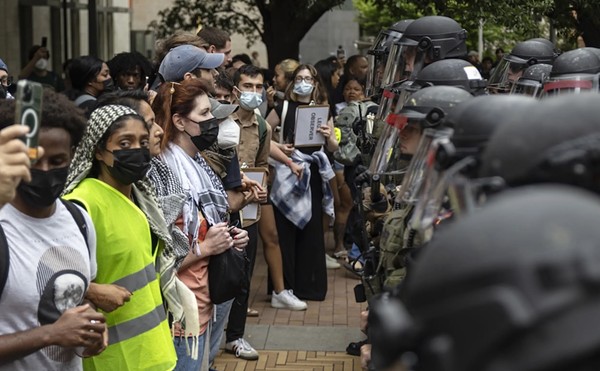COVID-19 isn't just changing the way college students attend class, it's changing what they're studying. Case in point: a new course at the University of Texas at San Antonio is using the pandemic as a laboratory for examining and applying demographic methods.
The undergraduate course, part of the UTSA Honors College curriculum, was developed by Kara Joyner, a professor of demography and department chair.
"Demography is a study of populations and particularly their size and what leads to changes in their size, like fertility, mortality and migration," Joyner told the Current.
The COVID-19 pandemic is of special interest to demographers, since the research around it provides tools for locating hot spots, identifying groups at higher risk and viewing changes in the virus over time.
City data dashboards tracking the pandemic also offer statistical information that Joyner saw as a potential learning tool, so she developed a demography course with COVID-19 as its central subject.
In the course, students will apply demographic methods to understand how to calculate rates such COVID-19 fatalities. The curriculum will also allow students to analyze how rates differ by age, gender, race and ethnicity, while observing the impact the pandemic may have on life expectancy, fertility, migration and unemployment.
Developing a course
Joyner taught demographic methods for almost two decades before she joined the faculty of the UTSA College for Health, Community and Policy this semester. Her previous position at Bowling Green State University gave her the foundation to develop a COVID-19-related demography course.
“For every topic I covered in my class, I could find an application to COVID-19,” Joyner said.
Joyner could see her students were already plugged into news and information about the pandemic, so incorporating it into the curriculum was a natural addition.
“The examples out there were timely and all related to the same concept because of COVID-19. The students really enjoyed it, because that’s what they were already focused on,” Joyner said.
“They could see the usefulness in demographic methods.”
One of the methods demographers use to determine the changing size, structure and movement of human populations is by calculating rates, according to Joyner.
"Texas, for example, might rank No. 2 in terms of number of confirmed COVID-19 cases," Joyner said. “But when you look at the per-capita rate, which takes into account population size, you see that really, Texas ranks further down.”
Viewing COVID-19 through a demographic lens will help students navigate the sea of data on the virus and consider common pitfalls in interpreting statistics, she added.
Varied student interest
When Joyner moved to UTSA in June, she had one month to advertise her newly developed COVID-19 demography course. Even with such a small window, the course drew more than a dozen undergrads.
“Often, it’s difficult attracting undergrads to a demography course, because they don’t know what demography is,” the professor said. “But you add COVID-19 into this, and that makes it a much more exciting course.”
A survey gauging student interest also informed Joyner that students were both looking to increase their methodological took kit and learn more about the virus through a scientific lens.
The research methods learned through demographic studies are applicable in other fields, Joyner pointed out. Students taking the class are majoring in biology, psychology, business, while some have minors including sociology, criminology and anthropology.
COVID-19 could bring a surge of interest in the field of demography, she added.
“The concern about population growth during the 1960s drew many Baby Boomers to the field of demography,” Joyner said. “They were concerned about the population growing exponentially and food sources not growing at the same rate.”
‘Shaped by pandemics’
"What's interesting about demography is that it is a field that has been shaped by pandemics and population growth," Joyner said.
For example, outbreaks of the bubonic plague in London caused parishes to gather information about death in the late 1500s and early 1600s. Later, scholars used the data to construct a life table to measure life expectancy.
Those events helped shape the methods and measures of demography as we understand it today.
“One of the things that was really interesting was comparing this pandemic to the Spanish flu,” Joyner said, “There are a lot of parallels.”
Like COVID-19, the Spanish flu outbreak of the early 1900s came in waves. It would decrease, then increase again, according to the professor. And similar to today’s pandemic, cities responded to the outbreaks in a variety of ways.
“So, you had St. Louis, which banned social gatherings and had people work at home, then you had Philadelphia that had a parade with 200,000-plus people,” Joyner said. “And if you look at the death rate of Philadelphia and St. Louis, there was a major, major difference. Philadelphia had much higher death rates.”
Stay on top of San Antonio news and views. Sign up for our Weekly Headlines Newsletter.


















